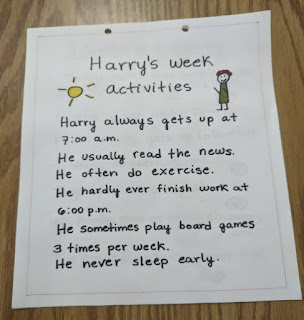Flipchards
Definition (based on language teaching)
According to whiteboardsandpinboards (n.d.) Flip charts in the classroom can be used to explain a topic, have a question-and-answer session with students, or allow for real-time feedback. Teachers may use flip charts to display important notices, pupil’s work, or come together on group brainstorming activities.
Reasons for use in Language Teaching
According to Ohio State University (1977) and Whiteboardsandpinboards (n.d.), flipcharts offer several advantages and disadvantages as an instructional device. The advantages of flipcharts make them a favored choice for many teachers. Firstly, flipcharts do not require electricity, making them highly accessible in various learning environments. Their user-friendly design and nature make them easy and convenient to use for both teachers and students. Flipcharts are versatile and can be used for a wide range of purposes, including drawings, charts, and note-taking. Additionally, when information is prepared in advance, the material can be revealed step by step, one sheet at a time, facilitating organized presentations. Another advantage is that flipcharts provide a semi-permanent record, allowing for easy reference and review. The sheets can also be stored effortlessly for future use. Moreover, the initial purchase cost of flipcharts is relatively low compared to many other instructional aids, making them a cost-effective option for educational settings. These advantages highlight the practicality and usefulness of flipcharts in the classroom.
Examples
Now we will know some examples of flipcharts created by the authors with different teaching topics.
To see the complete work click on download
2. Made by: Jessenia Justavino Dowload
3. Made by: Estefania Garcia Download
4. Kenia Maldonado Download







Comentarios
Publicar un comentario